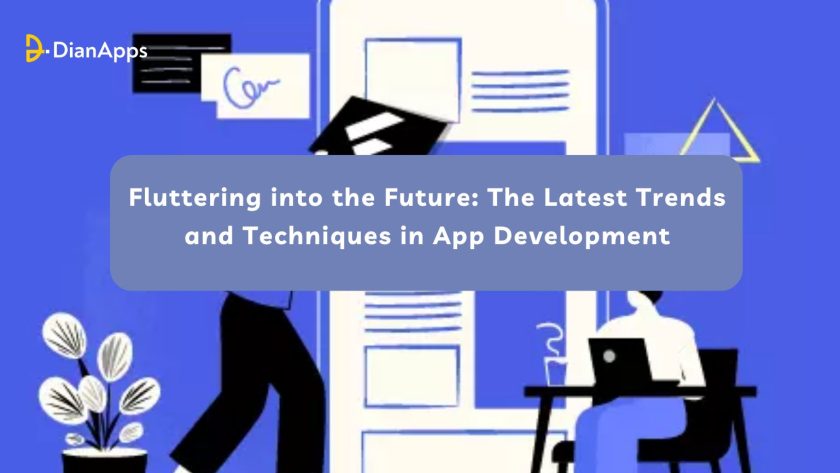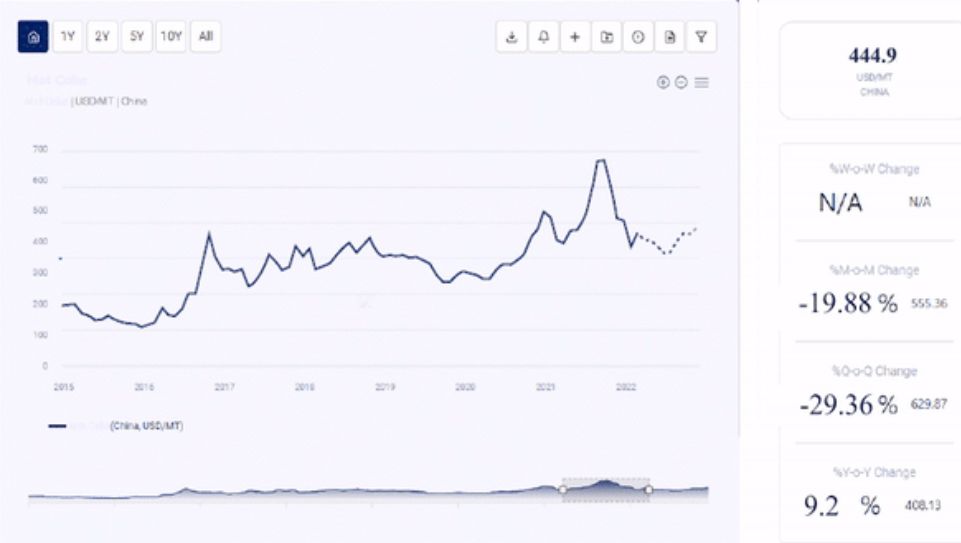Flutter has a bright future ahead! Not that it hasn’t performed in the previous or current year but according to tech experts, the Google-oriented Flutter app development has the potential to outshine even further to where it belongs right now!
As technology enhancements are a major practice employed by every individual and big brand, if you are someone who still hasn’t understood the importance of adapting to the latest trends and technologies, then this blog might change your perspective.
Here we’ll talk about how Flutter is a global preference for cross-platform app development needs by highlighting some of the rich trends and techniques that are expected to evolve as we move ahead with time.
Time to Flutter into the Future!
Why is Flutter Important for the Developer’s Community? Know the Statistics
Cross-platform Development:
Flutter allows developers to build high-quality mobile apps for iOS and Android using a single codebase. This significantly reduces development time and effort compared to building separate apps for each platform. It enables developers to reach a wider audience with their apps.
Fast Development and Hot Reload:
Flutter offers a fast development cycle with its hot reload feature. Mobile app developers can see the changes they make in the code immediately reflected in the app, eliminating the need for time-consuming recompilation and app restarts. This iterative development process greatly improves developer productivity.
Rich User Interfaces:
Flutter provides a rich set of pre-designed widgets that enable developers to create beautiful and highly customized user interfaces. It offers a flexible UI framework that allows developers to build visually appealing apps with smooth animations and transitions.
Performance:
Flutter’s architecture and rendering engine, called Skia, enable apps to achieve high performance. Flutter apps are compiled to native machine code, which eliminates the performance overhead associated with interpreted frameworks. The framework also allows Flutter app developers to optimize their apps for specific platforms, ensuring smooth and responsive user experiences.
Growing Community and Ecosystem:
From zero to hero, Flutter has gained significant popularity among developers since its release in 2017. It has a vibrant and rapidly growing community that actively contributes to the framework by creating plugins, packages, and resources. The community support and extensive ecosystem make it easier for developers to find solutions, libraries, and examples for their app development needs.
Statistics:
- According to the “State of JavaScript 2020” survey, Flutter app development services were ranked as the second most popular web framework and the first most loved web framework.
- As of May 2021, Flutter has been adopted by several major companies, including Google, Alibaba, Tencent, Philips, eBay, and more.
- Flutter’s GitHub repository has more than 117,000 stars and over 14,000 forks, indicating its popularity among developers.
- According to a survey by Stack Overflow in 2020, Flutter was listed among the top three most loved frameworks by developers.
- The Flutter community is rapidly growing, with numerous Flutter-focused conferences, meetups, and online communities. The official Flutter community on Reddit has over 170,000 members, and Flutter-related questions on Stack Overflow have been steadily increasing.
These statistics demonstrate the increasing adoption and positive sentiment surrounding Flutter within the developer’s community.
Futuristic Techniques To Use in Flutter Apps
To ensure your Flutter app performs well in the future, here are some techniques you can employ:
Code Optimization:
Write clean and efficient code to improve the performance of your app. Use proper coding techniques, follow best practices, and leverage Flutter’s features such as widget composition and state management to minimize unnecessary rebuilds and maximize code reuse.
Asynchronous Programming:
Utilize asynchronous programming techniques like Futures, Streams, and async/await to handle long-running operations such as network requests and file operations without blocking the user interface. This helps to keep the app responsive and smooth.
Performance Profiling and Optimization:
Regularly profile your app’s performance using tools like the Flutter Performance Monitor or Dart Observatory. Identify and optimize any performance bottlenecks, such as excessive widget rebuilds, expensive layout computations, or inefficient data processing.
Lazy Loading and Pagination:
If your app deals with large amounts of data, implement lazy loading and pagination techniques. Load data on-demand as the user scrolls or interacts with the app, instead of loading all the data at once. This improves app responsiveness and reduces memory consumption.
Caching and Local Data Storage:
Implement caching mechanisms to store frequently accessed data locally. This reduces the need for repeated network requests, enhances offline capabilities, and improves app speed. Flutter provides packages like shared_preferences and SQLite for easy data caching and local storage.
Network Optimization:
Optimize network communication by implementing techniques like compression, efficient data formats (e.g., JSON instead of XML), and minimizing unnecessary data transfers. Use libraries like Dio or Retrofit for efficient network requests and consider leveraging HTTP caching mechanisms.
Performance Testing:
Regularly test your app’s performance on different devices, screen sizes, and operating system versions. Use tools like Flutter’s integration_test package or third-party tools to simulate real-world scenarios and measure performance metrics.
App Size Optimization:
Pay attention to your app’s size as it can impact download times and storage space on user devices. Optimize asset sizes, remove unused resources, and consider using tools like code shrinking (e.g., ProGuard, R8) or app bundle support to reduce the app’s size.
Compatibility with New Flutter Releases:
Stay updated with the latest Flutter releases and migrate your app to newer versions to take advantage of performance improvements and bug fixes. Regularly review Flutter release notes and consider adapting your app’s codebase to leverage new features and optimizations.
By following these techniques, you can ensure that your Flutter app is well-optimized, performs efficiently, and remains future-proof as Flutter continues to evolve.
Future Trends of Flutter App Development
The future of Flutter app development holds exciting possibilities as the framework continues to evolve and gain momentum. Here are some future trends we can expect in Flutter app development:
Desktop and Web Support:
Flutter’s cross-platform capabilities are expanding beyond mobile. With the introduction of Flutter for desktop and Flutter for web, developers will be able to build applications for Windows, macOS, Linux, and the web using the same codebase. This will enable seamless multi-platform development and open up new opportunities for Flutter app deployment.
Enhanced UI Experiences:
Flutter provides a rich set of customizable UI widgets, and we can expect even more advanced UI capabilities in the future. Flutter’s team is constantly working on improving animations, transitions, and visual effects. The framework will continue to empower developers to create stunning and immersive user interfaces, leading to visually captivating app experiences.
Machine Learning and AI Integration:
As machine learning and artificial intelligence become more prevalent, Flutter will likely see increased integration with ML and AI libraries. Developers will be able to leverage Flutter’s flexibility to build intelligent apps that incorporate features like natural language processing, computer vision, and recommendation systems.
Increased Performance Optimization:
Flutter already offers excellent performance due to its compiled nature and efficient rendering engine. However, future updates will likely bring further performance optimizations, enabling developers to create even faster and smoother apps. Flutter’s team is continuously working on reducing app startup times, minimizing frame drops, and optimizing resource usage.
Improved State Management Solutions:
State management is a critical aspect of app development, and Flutter provides various options like Provider, Riverpod, and MobX. In the future, we can expect advancements in state management solutions, making it easier for developers to handle complex app states and data flows. Flutter’s team is actively exploring new patterns and libraries to simplify state management in larger and more complex applications.
AR/VR Integration:
Augmented Reality (AR) and Virtual Reality (VR) technologies are gaining traction across industries. Flutter’s ability to build immersive user interfaces makes it a suitable platform for AR/VR app development. We can expect Flutter to incorporate better support for AR/VR frameworks, enabling developers to create interactive and engaging experiences in these domains.
IoT and Wearable Devices:
With the proliferation of IoT and wearable devices, Flutter will likely see increased integration and support for building apps in these domains. Developers will be able to create applications that interact seamlessly with smart devices, sensors, and wearables, further expanding Flutter’s reach and use cases.
Increased Tooling and DevOps Support:
As Flutter adoption grows, we can expect an expansion of tooling and DevOps support. This includes better IDE integrations, debugging tools, testing frameworks, and CI/CD pipelines tailored specifically for Flutter. The Flutter ecosystem will continue to mature, making the development process smoother and more efficient.
Continued Community Growth and Collaboration:
Flutter’s community is thriving, with passionate developers actively contributing to its growth. As the community expands, we can anticipate more collaborative efforts, such as the creation of new plugins, packages, and open-source projects. The community will continue to be a valuable resource for learning, sharing knowledge, and finding solutions to common challenges.
Integration with Fuchsia OS:
Fuchsia OS is an upcoming operating system by Google designed for a wide range of devices. Flutter is the primary framework for building apps on Fuchsia OS, and as the OS gains traction, Flutter app development will see increased importance and support.
Conclusion
Flutter is propelling app development services into the future with its latest trends and techniques. As the framework continues to evolve and gain popularity, it brings forth a host of exciting possibilities for developers. The ability to create cross-platform apps with a single codebase has revolutionized the development process, saving time and effort while reaching a wider audience.
You can expect a vibrant and dynamic environment, where innovation and creativity are encouraged. Embracing the latest trends and techniques in Flutter app development will allow developers to stay ahead of the curve and build exceptional apps that provide delightful user experiences.
DianApps has put together a competent team that can design feature-rich, potent apps that will delight investors as well as customers. DianApps is a leading Flutter app development company in the USA & Australia. We concentrate on specialized business sectors and are always eager to take on difficult projects. Hire a skilled Flutter developer from our team to create a cross-platform app that completely transforms your online presence.
Article Source: https://medium.com/@marketing_96275/fluttering-into-the-future-the-latest-trends-and-techniques-in-app-development-e3331d31258





